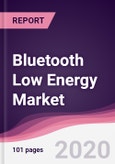What is Bluetooth Low Energy Market?
Bluetooth low energy is used to transfer data to other device through a wireless connectivity. Bluetooth low energy market is segmented based on the type of solution and also based on the type of mode. If the user want to stream audio or video the user can use a wireless headset which has become a must have accessory for mobile phones. In automotive market the Bluetooth wireless accessibility is improving the driver safety and it is also enhancing the in car entertainment experience. Bluetooth beacon solution are now deployed within office buildings, airports and even in city streets which enables the building owners and city planners to understand how the locations are utilized. By this space utilization system the productivity will increase with low price.
There are three different types of modes they are single mode, dual mode and classic. The single mode device is a type of device which only supports Bluetooth low energy whereas the dual mode devices which can connect with the billions of existing Bluetooth devices. Classic Bluetooth devices are that which can only communicate with the dual device.
What are the major applications for Bluetooth low energy market?
The various end users assessed includes health care, sports and fitness, electronic devices, automotive, asset tracking and proximity marketing, consumer electronics, industrial automation, wearable electronics. Bluetooth low energy market application in health care is improving by monitoring the patients’ health where ever they are. There are different monitoring devices like heart rate monitors, glucose monitors and blood pressure monitors. These devices track the condition of the patient and alert the patient if there are any serious conditions and also alert the patient in case if the patient miss any medication. This technology is also used in home automation like smart door locks where door locks are controlled by smart phone or tablet.
Market Research and Market Trends of Bluetooth Low Energy Market
Bluetooth low energy is going to support a new technology Mesh network which provides many-to-many device communications and which is going to specifically upgrade the communication performance for installation of wide range network.
Bluetooth low energy is into new micro positioning technology of Beacon which is like a lighthouse broadcasting signals, when a mobile phone enters the light range of lighthouse, beacon will transmit the codes for the mobile phones and after detecting the codes through app and the mobile phones will trigger the series of actions. This features function higher than GPS and used more in digital marketing, electronic payment and indoor positioning.
Volansys have announced Homebridge new IoT gateway for smart home system and home automation solutions in Bluetooth (5.0) which will now allow connecting, controlling and managing Bluetooth low energy based end devices with Homebridge making it more compatible with additional sensors and smart devices.
u-blox has announced NINA-B2 a dual mode Bluetooth standalone module enabling industrial IoT applications to built in secure boot and wide temperature ranges.
The new way of using Bluetooth low energy is using in hotels door locks with new check in process to benefit both the customers and the hoteliers.
Who are the Major Players in Bluetooth Low Energy market?
The companies referred in the market research report includes Texas Instruments, Nordic semiconductors, Cambridge Silicon Radio, Ericsson Technologies, Bluegiga Technologies and more than 10 other companies.
What is our report scope?
The report incorporates in-depth assessment of the competitive landscape, product market sizing, product benchmarking, market trends, product developments, financial analysis, strategic analysis and so on to gauge the impact forces and potential opportunities of the market. Apart from this the report also includes a study of major developments in the market such as product launches, agreements, acquisitions, collaborations, mergers and so on to comprehend the prevailing market dynamics at present and its impact during the forecast period 2018-2024.
Key Takeaways from this Report
Evaluate market potential through analyzing growth rates (CAGR %), Volume (Units) and Value ($M) data given at country level – for product types, end use applications and by different industry verticals.
Understand the different dynamics influencing the market – key driving factors, challenges and hidden opportunities.
Get in-depth insights on your competitor performance – market shares, strategies, financial benchmarking, product benchmarking, SWOT and more.
Analyze the sales and distribution channels across key geographies to improve top-line revenues.
Understand the industry supply chain with a deep-dive on the value augmentation at each step, in order to optimize value and bring efficiencies in your processes.
Get a quick outlook on the market entropy – M&A’s, deals, partnerships, product launches of all key players for the past 4 years.
Evaluate the supply-demand gaps, import-export statistics and regulatory landscape for more than top 20 countries globally for the market.
Table of Contents
Methodology

LOADING...







